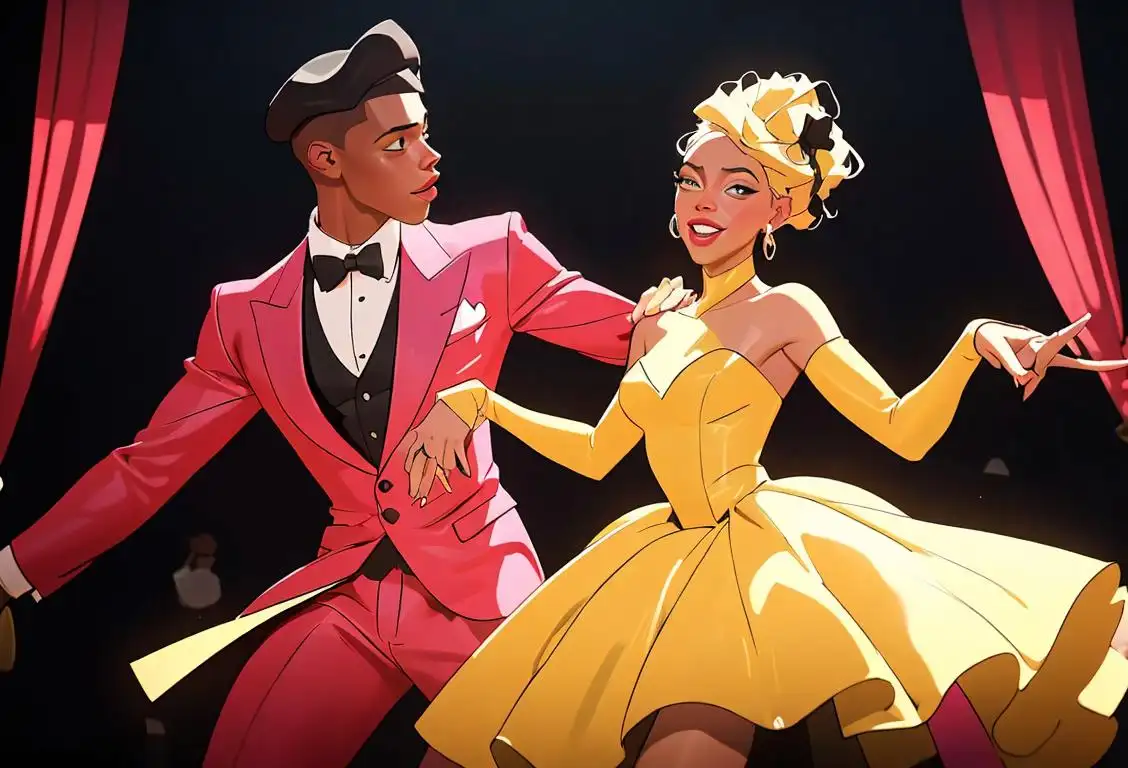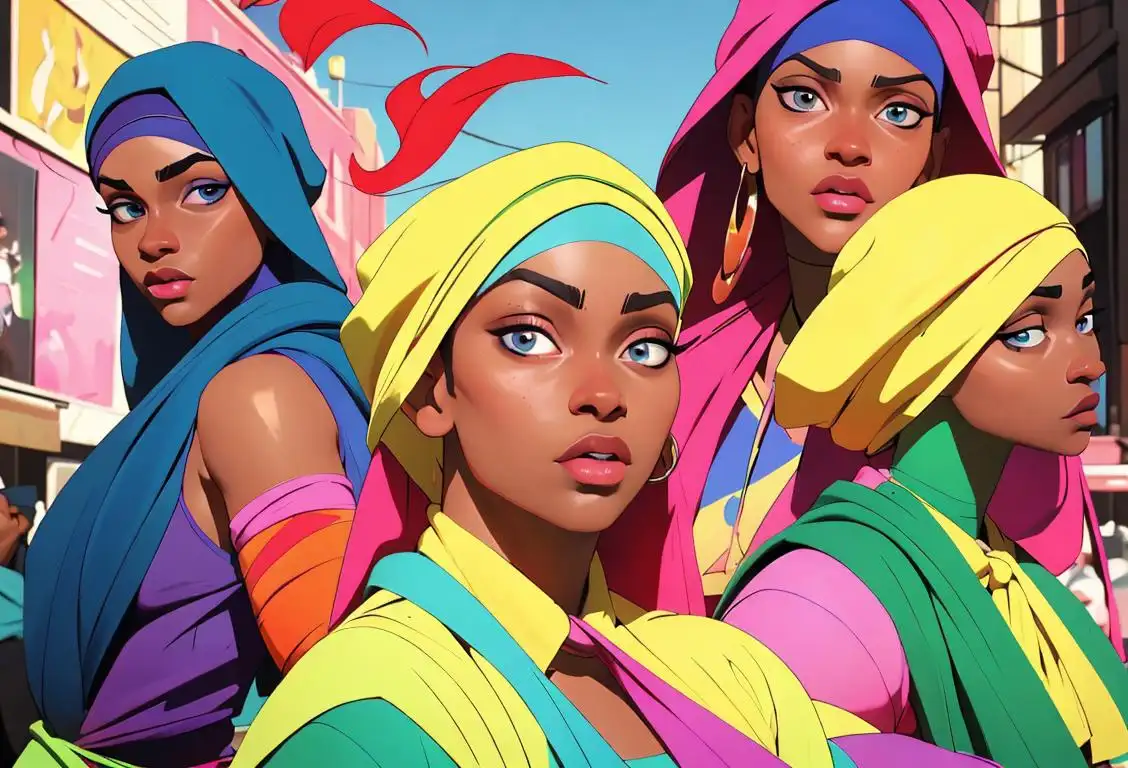National Flannel Day

Are you ready to rock that flannel fashion? Well, mark your calendars, my friend, because today is National Flannel Day! Whether you're a lumberjack or just a flannel enthusiast, this is your day to embrace the cozy comfort and rustic style of flannel. So, let's dive into the history of this beloved fabric and celebrate in true flannel fashion!
When is Flannel Day?
It's national flannel day on the 10th February.
The Origins of Flannel
Flannel has a long and storied history that dates back centuries. The material originated in Wales, where it was initially made from soft wool. It gained popularity among workers and outdoor enthusiasts due to its durability and ability to insulate in cold weather.
In the 17th century, flannel made its way to North America, where it was embraced by colonists and eventually became an iconic part of American fashion. In the 1990s, flannel experienced a resurgence in popularity, thanks in no small part to grunge bands like Nirvana and Pearl Jam. Soon, flannel shirts were flying off the shelves and becoming a staple in the wardrobes of alternative music lovers everywhere.
The Rise of National Flannel Day
While the exact origin of National Flannel Day is shrouded in mystery as soft as the fabric itself, one thing is clear: flannel enthusiasts across the nation eagerly gather on this day to celebrate their beloved style.
National Flannel Day gained significant attention online, with a whopping 644 mentions detected by our trusty internet detectors. The highest number of mentions occurred on February 10th, 2016, when flannel fever was at its peak.
Why We Love Flannel
Flannel isn't just a fabric; it's a lifestyle. People adore flannel for its cozy comfort, its ability to keep you warm on chilly days, and its undeniable fashion statement. Plus, flannel is versatile! Whether you're chopping wood, cozying up by a crackling fire, or heading out to hang with your friends, flannel has your back (literally!).
So, throw on your favorite flannel shirt, snug into those flannel sheets, or even rock a flannel dress if you're feeling fancy. National Flannel Day is the perfect excuse to embrace the warmth and style that flannel brings to our lives.
History behind the term 'Flannel'
17th century
Origins in Wales and Scotland
The term 'flannel' comes from the Welsh word 'gwalnen' meaning woolen cloth. Flannel initially referred to a type of soft, slightly napped fabric made from wool. It was commonly used in Wales and Scotland for clothing and bedding due to its warmth and comfort.
16th century
The Birth of Flannel
Flannel, a soft woven fabric made from wool or cotton, originated in the 16th century. It was originally made of worsted yarn or carded wool and was used to make warm and comfortable clothing. The term 'flannel' is believed to have derived from the Welsh word 'gwlanen,' which means woolen cloth.
17th century
Flannel in Wales
In the 17th century, Wales emerged as a significant producer of flannel. The damp climate and availability of wool in Wales made it an ideal region for its production. Welsh flannel gained popularity due to its softness and warmth, and it became an important part of the Welsh economy.
18th century
Industrial Revolution and growth in popularity
During the 18th century, the Industrial Revolution led to advancements in textile manufacturing. This period saw the rise of the flannel industry, with the fabric being produced on a large scale using improved weaving and spinning techniques. Flannel became increasingly popular, particularly in Great Britain, as it was durable, affordable, and suitable for various applications.
19th century
Flannel shirts and workwear
In the 19th century, flannel gained significant traction as a material for shirts and workwear. The fabric's softness, warmth, and durability made it ideal for labor-intensive jobs where comfort and protection were essential. Flannel shirts became synonymous with outdoor activities, especially popular among lumberjacks, farmers, and hunters.
18th century
Flannel in Fashion
During the 18th century, flannel started to become synonymous with comfort and luxury. It gained popularity among the wealthy as a fabric for nightwear and undergarments due to its soft texture. Flannel was also used for bed linens, blankets, and baby clothes.
20th century
Flannel in popular culture
During the 20th century, flannel's association with utility and outdoorsy lifestyles influenced its representation in popular culture. In the United States, flannel shirts became an iconic symbol of the grunge movement of the 1990s, embraced by alternative rock musicians and their fans. This trend brought flannel back into the spotlight, propelling it to become a fashion statement across different subcultures.
19th century
Industrial Production and Expansion
The 19th century marked a significant shift in flannel production. The Industrial Revolution led to the mechanization of textile production, increasing the availability and affordability of flannel. Mills and factories were established in various parts of the world, further contributing to its popularity.
20th century
Flannel in Popular Culture
In the 20th century, flannel became associated with various subcultures and fashion trends. In the 1990s, grunge fashion popularized flannel shirts, particularly among musicians and alternative culture enthusiasts. Flannel shirts became a symbol of rebellion and non-conformity, making flannel an iconic fabric of the era.
Present
Flannel Today
Today, flannel continues to be a versatile and beloved fabric. It is used for various clothing items, ranging from shirts and pajamas to blankets and scarves. Flannel's comfort, warmth, and timeless appeal have made it a staple in countless wardrobes worldwide.
Did you know?
Did you know that flannel was originally worn by Welsh farmers to protect themselves from the elements? It wasn't until much later that flannel became a fashion statement embraced by people around the world!Tagged
history fashion musicFirst identified
2nd June 2015Most mentioned on
10th February 2016Total mentions
644Other days
Flannel Day
Bandanna Day
Jayonce Day
Avril Lavigne Appreciation Day
Du Rag Day
Crown Day
Tweed Day
Album Day
Button Day
Dress Like Jagged Edge Day








